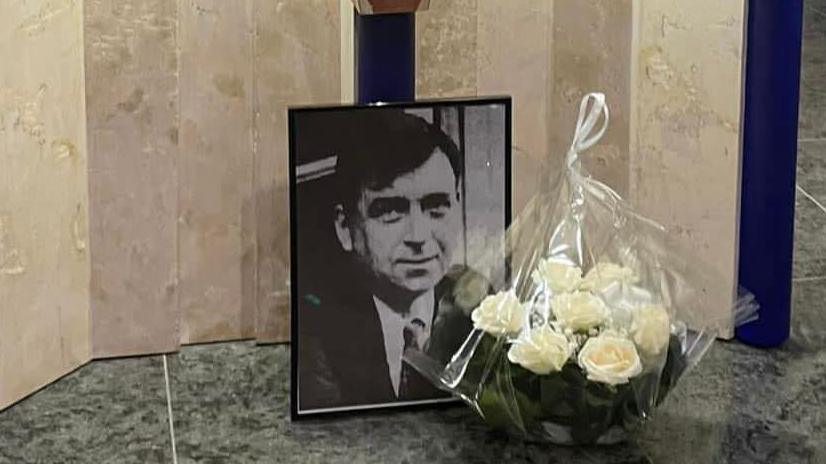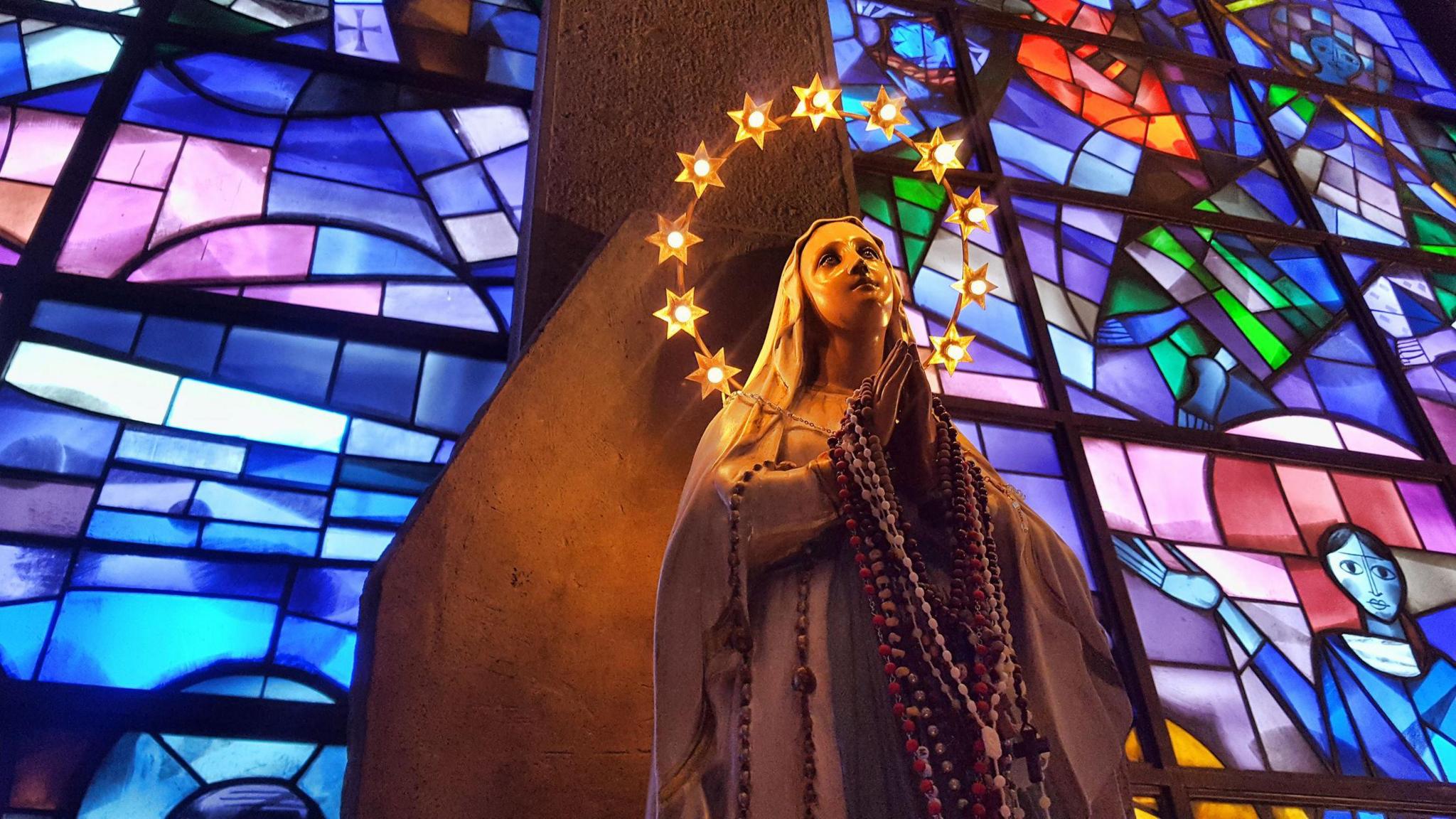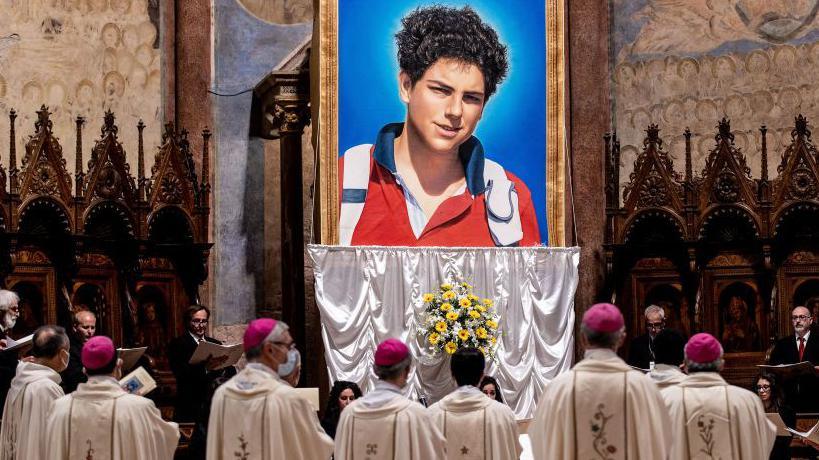Paralysed sailor's cure declared 'miracle' by church

John Traynor is the first English person to be added to a list of 71 apparently inexplicable cures from visiting Lourdes
- Published
The apparently unexplainable cure of a paralysed sailor more than a century ago has been officially declared a miracle by church authorities.
John "Jack" Traynor, from Liverpool, returned from the French shrine of Lourdes pushing his own wheelchair on 28 July 1923 after travelling to the sacred site six days earlier with a paralysed right hand and unable to walk.
Newly-found church documents have convinced the Archdiocese of Liverpool and a Lourdes medical panel that he had experienced an irreversible cure which could not be explained medically.
Archbishop Malcolm McMahon made the announcement at a Mass in Liverpool's Metropolitan Cathedral on Sunday, making it the first English case to be recognised.
"It hasn't really sunk in yet," said Mr Traynor's great-great grandson Alex Taylor.
He said while the story might seem unbelievable to many, it was not to him after he visited the shrine himself.
"This is going to have an effect beyond Merseyside and around the world. We are delighted," he said.
Family members were informed just over a week ago and attended the cathedral to hear Archbishop McMahon announce with "great joy" that the cure was a miracle.
An attempt in 1993 to revive the case floundered previously because of insufficient "contemporaneous medical evidence".
Lourdes authorities adhere to strict Vatican criteria dating back nearly 300 years, which stipulate a serious untreatable medical condition must have an instant medically "inexplicable" lasting cure to be classed as a miracle and also be ratified by the recipient's local bishop.

John Traynor (centre), pictured standing among a crowd during a subsequent pilgrimage to Lourdes
Mr Traynor, who had epilepsy, had originally been deemed too sick to travel to the shrine, where Catholics have prayed for miracle cures since 1858 following reported visions of the mother of Jesus Christ.
He was badly injured while serving with the Royal Naval Reserve forces in the 1915 Gallipoli landings, when a bullet tore through his right armpit severing the nerves to his right arm and causing paralysis.
He returned to Liverpool walking again after bathing in the baths at Lourdes, which are believed by some Christians to be a source of healing, and was greeted by huge crowds - but the church never ratified the apparently inexplicable cure at the time.
Mr Traynor recovered his strength to the extent where he was able to run a coal haulage business, often lifting heavy sacks with ease for the rest of his life.
His epilepsy also apparently vanished.

Lourdes authorities adhere to strict criteria to assess apparent miracle cures
Among the crowds who turned out to greet him at Lime Street station were the grandparents of Dr Kieran Moriarty, an English member of the International Medical Committee of Lourdes for the last 20 years, who was asked last year to review the case.
He unearthed new evidence from Lourdes archives which showed a panel of doctors ruled in 1926 that Mr Traynor had experienced a "prodigious healing which was absolutely outside and above the forces of nature" but the documents were never sent to Liverpool.
Dr Moriarty said he was "deeply moved" by the research, adding: "I heard the story of the cure when I was around eight years old and I always thought that it was a recognised miracle until I came to Lourdes as a medical student in 1971."
Listen to the best of BBC Radio Merseyside on Sounds and follow BBC Merseyside on Facebook, external, X, external, and Instagram, external. You can also send story ideas to northwest.newsonline@bbc.co.uk, external
Related topics
- Published17 May 2024

- Published23 May 2024

- Published13 February 2019
